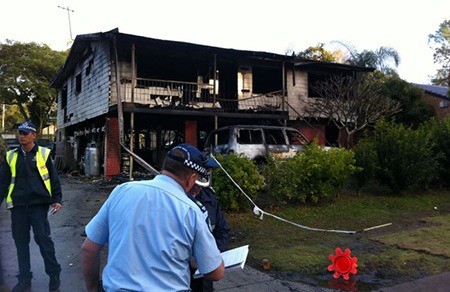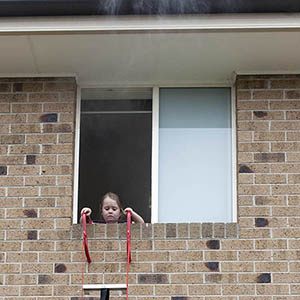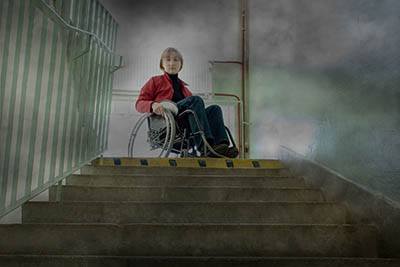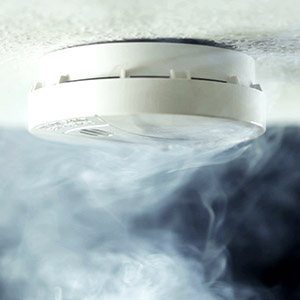 From January 1, 2017 Queensland Government legislation was introduced to improve public safety. This legislation should also be considered a minimum requirement accross Australia. The legislation applied to all dwellings across the state, and specifies the type, placement and operation of smoke alarms in homes. The laws will be phased in over 10 years, at different rates for new and existing homes, and aim to make sure all houses in Queensland are fitted with effective smoke alarms to prevent loss of life. Why were the new laws so important requiring all homes install Interconnected, Photoelectric Smoke Alarms in Queensland? FireRead More
From January 1, 2017 Queensland Government legislation was introduced to improve public safety. This legislation should also be considered a minimum requirement accross Australia. The legislation applied to all dwellings across the state, and specifies the type, placement and operation of smoke alarms in homes. The laws will be phased in over 10 years, at different rates for new and existing homes, and aim to make sure all houses in Queensland are fitted with effective smoke alarms to prevent loss of life. Why were the new laws so important requiring all homes install Interconnected, Photoelectric Smoke Alarms in Queensland? FireRead More Queensland Interconnected Smoke Alarm Law Change
 From January 1, 2017 Queensland Government legislation was introduced to improve public safety. This legislation should also be considered a minimum requirement accross Australia. The legislation applied to all dwellings across the state, and specifies the type, placement and operation of smoke alarms in homes. The laws will be phased in over 10 years, at different rates for new and existing homes, and aim to make sure all houses in Queensland are fitted with effective smoke alarms to prevent loss of life. Why were the new laws so important requiring all homes install Interconnected, Photoelectric Smoke Alarms in Queensland? FireRead More
From January 1, 2017 Queensland Government legislation was introduced to improve public safety. This legislation should also be considered a minimum requirement accross Australia. The legislation applied to all dwellings across the state, and specifies the type, placement and operation of smoke alarms in homes. The laws will be phased in over 10 years, at different rates for new and existing homes, and aim to make sure all houses in Queensland are fitted with effective smoke alarms to prevent loss of life. Why were the new laws so important requiring all homes install Interconnected, Photoelectric Smoke Alarms in Queensland? FireRead More 
 What you need to know before you let your kids stay overnight Emergencies can happen any time – and when your children sleep over at a friend or relative’s house, as a parent you need to know that the home they are staying in is safe. With an average of 3000 house fires each year in Victoria, it’s essential that every home has basic fire safety measures in place. Before you agree to your child sleeping over, you need to know that if a fire was to happen overnight, the parents in charge have a well-drilled escape plan to help
What you need to know before you let your kids stay overnight Emergencies can happen any time – and when your children sleep over at a friend or relative’s house, as a parent you need to know that the home they are staying in is safe. With an average of 3000 house fires each year in Victoria, it’s essential that every home has basic fire safety measures in place. Before you agree to your child sleeping over, you need to know that if a fire was to happen overnight, the parents in charge have a well-drilled escape plan to help With the holidays now over, and the anticipation of the school year ahead, it’s an exciting time for kids, parents and teachers alike. With every new year, there’s new challenges, and teachers have been busy planning – and this goes beyond just classes and the curriculum. Staff at all schools need to have plans in place to make sure that in the event of an emergency, everyone can get out safely. An evacuation in a school is particularly challenging – that’s why having an emergency evacuation plan that caters for everyone – including those with mobility limitations – is essential.
With the holidays now over, and the anticipation of the school year ahead, it’s an exciting time for kids, parents and teachers alike. With every new year, there’s new challenges, and teachers have been busy planning – and this goes beyond just classes and the curriculum. Staff at all schools need to have plans in place to make sure that in the event of an emergency, everyone can get out safely. An evacuation in a school is particularly challenging – that’s why having an emergency evacuation plan that caters for everyone – including those with mobility limitations – is essential. Why emergency evacuation ladders are a must-have for families in multi-storey dwellings Every home and workplace needs an evacuation plan – and if you live or work in a multi-storey building, you’ll also need to plan how occupants, including children, will escape if the usual exits are blocked. An emergency evacuation ladder provides an affordable and practical solution, transforming almost any upper-storey window into a portable fire escape. And importantly, they can be used to carry children and infants safely to the ground in the event of a fire. This makes them a potentially life-saving emergency tool – and one
Why emergency evacuation ladders are a must-have for families in multi-storey dwellings Every home and workplace needs an evacuation plan – and if you live or work in a multi-storey building, you’ll also need to plan how occupants, including children, will escape if the usual exits are blocked. An emergency evacuation ladder provides an affordable and practical solution, transforming almost any upper-storey window into a portable fire escape. And importantly, they can be used to carry children and infants safely to the ground in the event of a fire. This makes them a potentially life-saving emergency tool – and one General Requirements All buildings must develop, implement and adopt emergency plans to ensure a safe environment for employees, residents and visitors. When developing these plans the needs of people with disabilities must be considered. Ideally, all visitors should be able to independently evacuate from a level of a building, other than the entry level by way of an evacuation lift. However, it is acknowledged that buildings may not have been constructed to provide this level of accessibility in evacuation routes. Where a person might have difficulty negotiating an exit route (i.e. using a fire stairs), each building must implement some
General Requirements All buildings must develop, implement and adopt emergency plans to ensure a safe environment for employees, residents and visitors. When developing these plans the needs of people with disabilities must be considered. Ideally, all visitors should be able to independently evacuate from a level of a building, other than the entry level by way of an evacuation lift. However, it is acknowledged that buildings may not have been constructed to provide this level of accessibility in evacuation routes. Where a person might have difficulty negotiating an exit route (i.e. using a fire stairs), each building must implement some If an emergency strikes in a child care facility or a hospital where children are being cared for, the task of getting everyone out safely is challenging. Because babies and children all need extra assistance in an emergency situation any evacuation is going to take longer than usual – which is why having an escape plan and the right emergency equipment is vital. Today, over 900,000 children attend formal child care. Childcare centre managers and staff have an ethical and legal responsibility to provide a safe environment for all children in their care. It’s up to them to make sure that if
If an emergency strikes in a child care facility or a hospital where children are being cared for, the task of getting everyone out safely is challenging. Because babies and children all need extra assistance in an emergency situation any evacuation is going to take longer than usual – which is why having an escape plan and the right emergency equipment is vital. Today, over 900,000 children attend formal child care. Childcare centre managers and staff have an ethical and legal responsibility to provide a safe environment for all children in their care. It’s up to them to make sure that if In May 2011, new Federal and State legislation was introduced to improve access to buildings for people with a disability. The new access provisions do not specifically address egress or evacuation provisions for people with a disability, but there are still legal obligations that need to be met under the Federal Disability Discrimination Act 1992 (DDA) and Occupational Health and Safety (OHS) legislation. It is important for key stakeholders to understand their obligations and explore all appropriate options to ensure that people with a disability will be able to evacuate a building in an emergency. Defining ‘disability’ The term ‘disability’
In May 2011, new Federal and State legislation was introduced to improve access to buildings for people with a disability. The new access provisions do not specifically address egress or evacuation provisions for people with a disability, but there are still legal obligations that need to be met under the Federal Disability Discrimination Act 1992 (DDA) and Occupational Health and Safety (OHS) legislation. It is important for key stakeholders to understand their obligations and explore all appropriate options to ensure that people with a disability will be able to evacuate a building in an emergency. Defining ‘disability’ The term ‘disability’ Every home and workplace needs a smoke alarm – and it needs to be working to save lives. So how can you keep yours in good order, so that it’s ready for action? By testing your alarm monthly and replacing the battery at least yearly, you should avoid most problems. But if you’re having issues with your smoke alarm, our troubleshooting guide is here to help. Why is My Smoke Alarm Going Off When There’s No Fire? First and foremost, check your surroundings closely to make sure that there is definitely no fire. Next, visit the kitchen to make sure
Every home and workplace needs a smoke alarm – and it needs to be working to save lives. So how can you keep yours in good order, so that it’s ready for action? By testing your alarm monthly and replacing the battery at least yearly, you should avoid most problems. But if you’re having issues with your smoke alarm, our troubleshooting guide is here to help. Why is My Smoke Alarm Going Off When There’s No Fire? First and foremost, check your surroundings closely to make sure that there is definitely no fire. Next, visit the kitchen to make sure Installing smoke detectors in your home or workplace is essential – they provide early warning, giving you, your family and your workmates, the best chance of escape in the event of a fire. In most states of Australia, it’s compulsory to install working smoke alarms – and the statistics show that they work. According to the Metropolitan Fire Brigade you are 57% more likely to suffer property loss and damage, 26% more likely to suffer serious injuries, and four times more likely to die, if you are caught in a fire in a building that does not have a working
Installing smoke detectors in your home or workplace is essential – they provide early warning, giving you, your family and your workmates, the best chance of escape in the event of a fire. In most states of Australia, it’s compulsory to install working smoke alarms – and the statistics show that they work. According to the Metropolitan Fire Brigade you are 57% more likely to suffer property loss and damage, 26% more likely to suffer serious injuries, and four times more likely to die, if you are caught in a fire in a building that does not have a working The Hidden Dangers of Carbon Monoxide Poisoning Headache Dizziness Irritability Confusion/Memory loss Disorientation Nausea and vomiting Abnormal reflexes Difficulty in coordinating Difficulty in breathing Chest Pain Cerebral Edema Convulsions/Seizures Coma Death SIGNS AND SYMPTOMS Often, several members of the same family or those in a given building will complain of the same symptoms. Children are thought to be more susceptible to carbon monoxide poisoning than adults. Some people may not suspect that CO poisoning is occurring until major symptoms appear. Carbon Monoxide poisoning can mimic gastroenteritis (nausea and vomiting). Other manifestations may cause the appearance of what may appear to
The Hidden Dangers of Carbon Monoxide Poisoning Headache Dizziness Irritability Confusion/Memory loss Disorientation Nausea and vomiting Abnormal reflexes Difficulty in coordinating Difficulty in breathing Chest Pain Cerebral Edema Convulsions/Seizures Coma Death SIGNS AND SYMPTOMS Often, several members of the same family or those in a given building will complain of the same symptoms. Children are thought to be more susceptible to carbon monoxide poisoning than adults. Some people may not suspect that CO poisoning is occurring until major symptoms appear. Carbon Monoxide poisoning can mimic gastroenteritis (nausea and vomiting). Other manifestations may cause the appearance of what may appear to